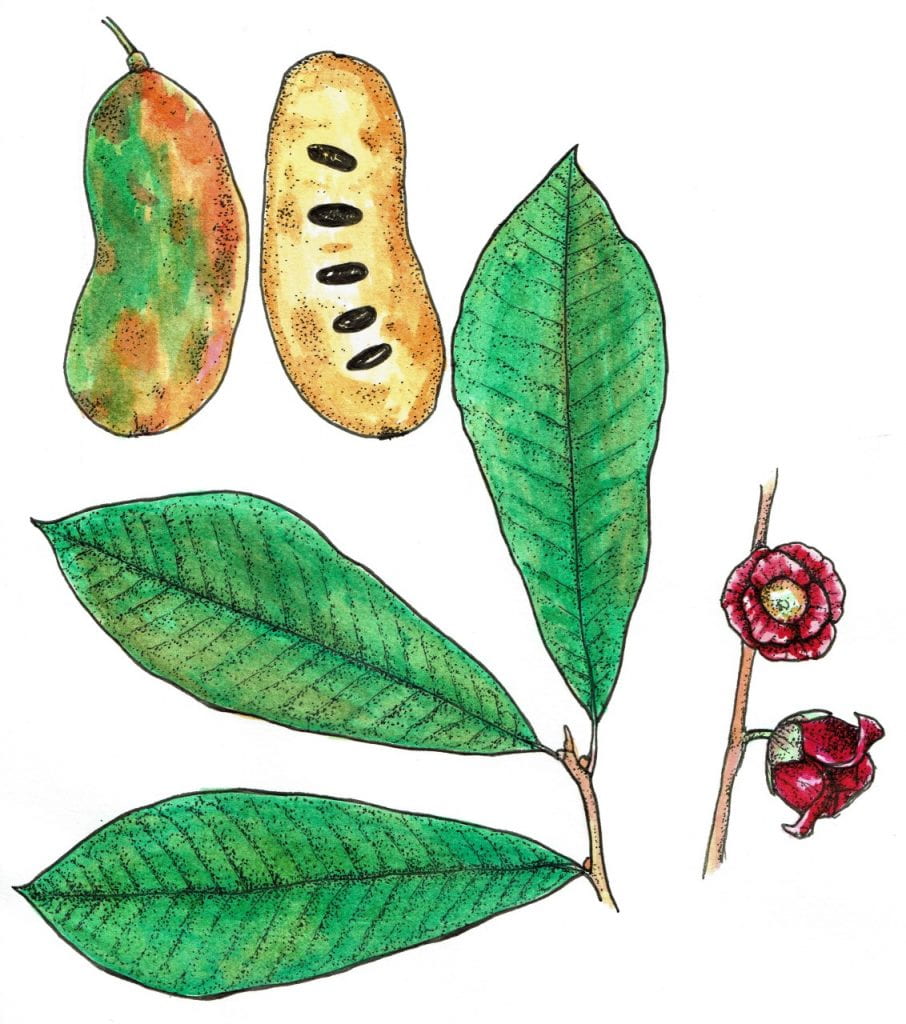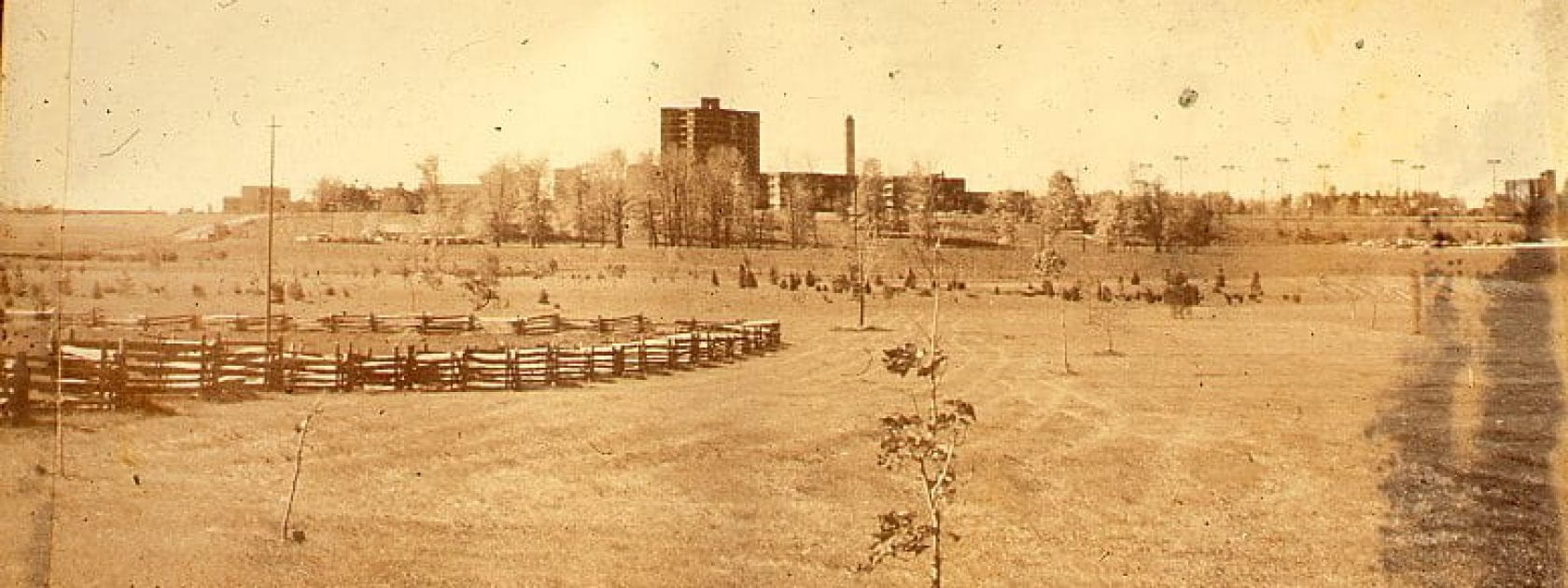Written by Sadie Campbell

With its large leaves and mango-like fruit, the pawpaw (Asimina triloba) is a rare and unusual component of southern Ontario forests.
The pawpaw has large drooping, medium-green elliptical leaves (between 10 to 30 centimetres long!) with pointed tips and smooth edges, that turn a bright yellow in the fall. With such leaves, the pawpaw seems like it might be more at home somewhere more tropical rather than its native area of Ontario. In fact, we (at The Arboretum) are at the northernmost edge of the species range which extends south to Georgia and Florida. Its preferred habitat is the rich, moist soil of open woods, stream banks, and sheltered wooded slopes.
In the spring, the pawpaw produces dark reddish-purple flowers which have a scent sometimes compared to that of rotting meat. The flowers, though not particularly showy, are interesting because their colour and smell mimic the appearance of decomposing organic matter, thus attracting flies that pollinate the tree. The leaves also have a strong odour when crushed.
The pawpaw’s fruit is inarguably its most unique feature. These light greenish-yellow berries grow in the summer and ripen in the fall, softening and darkening to yellow, brown, green, or orange. The berries are the largest edible tree fruit native to Canada, growing up to 16 centimetres long! They have an irregular oblong shape similar to a mango and have thin, leathery skin. When ripe, the flesh inside the fruit is dark yellow or orange and has a soft, custardy texture with several large dark brown seeds. It has a tropical flavour that is somewhat similar to a combination of mango, banana, and papaya.
Be sure to check out this unique tree on your next visit to The Arboretum! Pawpaw trees can be found in the World of Trees collection or the Gosling Wildlife Gardens Small City Garden.
Sadie Campbell is an undergraduate student studying Landscape Architecture at the University of Guelph


